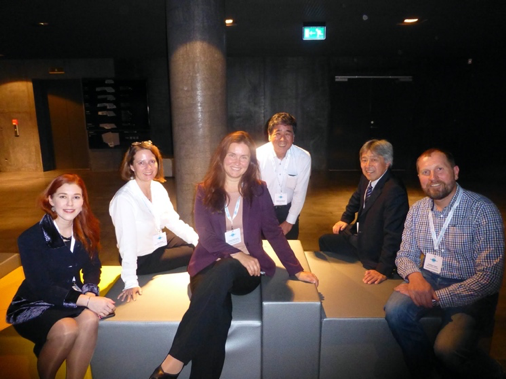Smart and Connected Arctic Engineering – the Key to a Better Life in the Cold:
Session Summary, Arctic Circle Assembly, October 10-13th 2019, Reykjavik, Iceland.
 This interdisciplinary discussion panel, focusing on the importance of engineering research in the Arctic and its implementation in a changing climate, was organized in order to discuss the enabling of higher quality of life as well as sustainable and low-impact development in the Arctic. The session provided an outlook on infrastructure development in the Arctic, particularly related to climate and sea-ice prediction models, sustainable development practices, and Indigenous communities. Moreover, panelists discussed commercial and navigational feasibility of the Northern Sea Route as well as the assessment of environmental risks and its minimization pertaining to the Arctic development.
This interdisciplinary discussion panel, focusing on the importance of engineering research in the Arctic and its implementation in a changing climate, was organized in order to discuss the enabling of higher quality of life as well as sustainable and low-impact development in the Arctic. The session provided an outlook on infrastructure development in the Arctic, particularly related to climate and sea-ice prediction models, sustainable development practices, and Indigenous communities. Moreover, panelists discussed commercial and navigational feasibility of the Northern Sea Route as well as the assessment of environmental risks and its minimization pertaining to the Arctic development.
Scientific highlights:
- Arctic engineering is an adaptation tool, however, better interactions among all stakeholders is needed. For example, sustainable development would be more welcomed if communities were better informed (i.e., on new technologies) as well as if policy-makers and governments are all participating in dialogues.
- Possible solutions: stakeholders' analysis, citizen science, raising awareness, foresight, and interactive policies needs to be developed and implemented
- What are some selected areas of the future Arctic Engineering?
- Civil planning, housing, and settlement infrastructure
- Shipping distance - Northern Sea Route
- Coastal erosion and coast retreat
- Possible ways to reduce pollution
- Spatio-temporal prediction models
- International actors’ dialogues
- The spatio-temporal variability needs to be taken into account in providing Arctic engineering solutions. abt. 2-week predictions and especially their validations need to have “fast”/actual inputs from both scientists and engineers at different levels, i.e., regional, national, international as well as seasonal, annual, and decadal.
- Possible solutions: Arctic Engineering Research Platforms for exchanging opinions, datasets (initiating big data analysis), scientific communication and outreach, stakeholders' involvement etc.
- Lack of communication between scientists and engineers was identified as challenging - everyone’s schedules are occupied with their current duties, projects, etc.
- Possible solution: Everyone has recognized the necessity to realize a scheme to speed-up the information/knowledge exchange between science community and engineering community (e.g. to establish IASC Integration Support Group). As a first step, it is recommended to invite a few leaders from the Arctic engineering community to ASSW2021 and ask them to introduce their activities to discuss how to realize better cooperation and/or integration with IASC.
This meeting report has been submitted by session organizers Alevtina Evgrafova & Hajime Yamaguchi. More session photos are available here.
